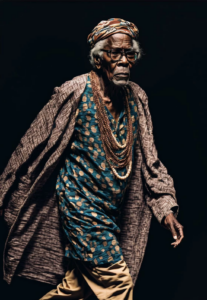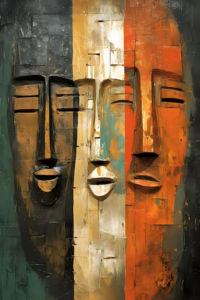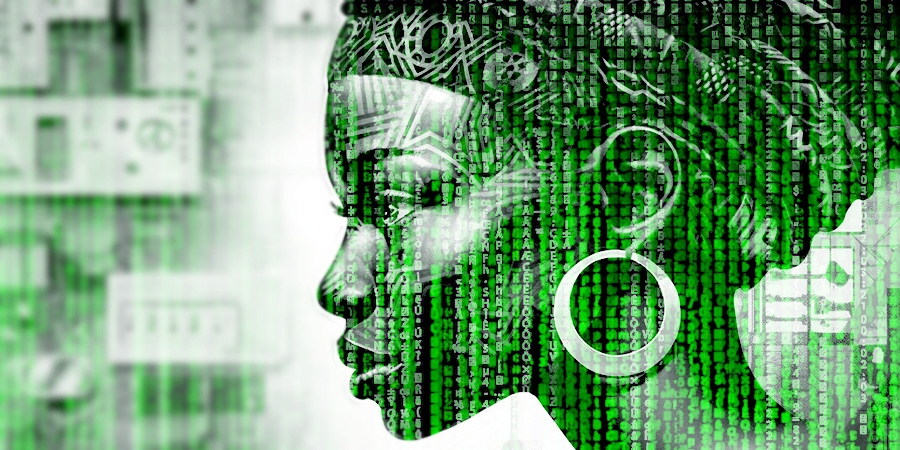Africa boasts a rich and diverse cultural heritage, encompassing a multitude of languages, traditions, art forms, and historical legacies. This heritage is a source of pride and a vital component of the continent’s identity. However, preserving this heritage has been a challenge due to various factors, such as limited access to digital tools and platforms. In recent years, there has been a growing interest in the use of AI as it has emerged as a powerful ally in the quest to safeguard and revitalize Africa’s cultural heritage.
This article explores how AI is and can shape African cultural and heritage preservation.
Digitizing Cultural Artifacts
AI and VR:
The intersection of AI and virtual reality (VR) emerges as a promising avenue for addressing the challenges of heritage preservation in Africa. AI, with its data-driven intelligence, opens doors to comprehensive heritage preservation. Machine learning algorithms can analyze vast amounts of cultural data, aiding in the preservation of languages, customs, and artifacts. VR, on the other hand, provides a platform for immersive experiences that can help people connect with their cultural heritage in new and exciting ways.
Digital Archives and Museums:
AI plays a pivotal role in digitizing archives, manuscripts, and artifacts from across the continent, making them accessible to a global audience. The African World Heritage Fund, in its mission to preserve fragile manuscripts and documents, has harnessed the power of AI-driven digitization. This technology facilitates the meticulous preservation and digitization of historical records, manuscripts, and artifacts, ensuring they remain accessible to a global audience. AI algorithms play a pivotal role in the categorization and cataloging of these treasures, unlocking the past for future generations.
Image and Audio Analysis:
AI technologies offer an unerring eye for the restoration and analysis of historical photographs, audio recordings, and artworks. For instance, AI is being employed to restore the faded colors of ancient paintings, unveil concealed details, and even date artifacts with unparalleled precision. The restoration of previously damaged artworks, such as murals, frescoes, and sculptures, bears testimony to AI’s capability to resurrect the vibrancy of history.
Language and Oral Tradition Preservation
Language Revitalization:
The richness of African linguistic diversity is celebrated through AI-driven language preservation initiatives. These employ natural language processing to document and revitalize endangered African languages. For instance, AI-based translation tools now enable local communities to engage in preserving their linguistic heritage by translating and recording narratives, oral traditions, and historical documents.
Oral History Archives:
AI is employed in the meticulous transcription and translation of oral histories. This not only aids in the preservation of narratives passed down through generations but also ensures their accessibility to a wider audience. Initiatives to transcribe and translate traditional tales, folk songs, and oral histories are revitalizing the heritage of African communities.
Cultural Content Preservation
Content Translation and Localization:
AI-driven translation and localization services facilitate the adaptation of cultural content into a multitude of languages, thus expanding its reach and impact. Museums and cultural institutions now employ AI-powered translation tools to provide visitors with detailed information in their preferred language, making African heritage accessible to a global elite audience.
Interactive Storytelling:
AI technologies serve to create immersive, interactive digital storytelling experiences, effectively conveying African folklore, mythology, and traditional narratives to the discerning elite with a desire for cultural enrichment.
AI for Art Restoration and Preservation
Art Conservation:
AI-assisted art restoration methodologies are instrumental in preserving the integrity of culturally significant artworks. For instance, the restoration of iconic African paintings and sculptures is undertaken with precision, minimizing further damage and wear. AI algorithms are employed to analyze the materials, colors, and techniques used by artists, ensuring the restoration remains true to the original work.
Mural and Fresco Restoration:
AI is adeptly utilized in the meticulous preservation of ancient murals and frescoes. For example, in the ancient city of Timbuktu, Mali, AI-based imaging techniques are being employed to restore murals in historic mosques. These technologies analyze faded pigments, reconstruct missing elements, and reintegrate vivid colors, effectively breathing life into long-forgotten masterpieces.
 Generative AI and Cultural Heritage Preservation
Generative AI and Cultural Heritage Preservation
Generative AI, with its capacity to restore, recreate, and generate cultural artifacts and narratives, offers a compelling solution to the challenges of preserving Africa’s cultural heritage. It plays a pivotal role in reviving endangered languages, revitalizing oral traditions, and creating culturally inspired content that resonates with a global audience. One concept of employing Generative AI for cultural preservation revolves around the creation or integration of assets into a digital realm or metaverse.
This strategy aims to ensure the endurance and protection of tangible objects and other culturally significant elements. Consequently, it empowers nation-states, governments, communities, or societies to safeguard inherently precious items while also expanding their presence into emerging domains.
Generative AI, utilizing advanced models like GANs, demonstrates its exceptional capacity in two crucial aspects of cultural preservation. First, in the realm of art restoration, it can meticulously recreate and restore ancient cultural artifacts, such as African masks and sculptures, safeguarding their intricate details and vibrancy for posterity. Second, generative AI excels in historical document regeneration, ensuring the preservation and accessibility of historical texts written in African languages that may have otherwise deteriorated over time.
This technology breathes new life into damaged, faded, or incomplete documents, preserving linguistic heritage and making them accessible to a global audience, thereby securing cultural legacies for future generations.
Ethical Considerations
Ethical considerations regarding data privacy and ownership are central to the discussion. African nations are actively establishing frameworks that prioritize local control over culturally significant data. Collaborative efforts between cultural institutions and AI developers aim to ensure data sharing aligns with the rights and aspirations of local communities. Simultaneously, addressing bias in AI algorithms, especially in cultural content digitization, is a critical focus. Initiatives are being implemented to guarantee diverse and authentic representation, thereby safeguarding the multifaceted richness of Africa’s heritage, with AI acting as a faithful guardian of this legacy.
The intersection of AI and cultural preservation in Africa offers the promise of revitalizing and sharing the continent’s rich and diverse cultural heritage with a global audience. While AI presents exciting opportunities, it also raises important ethical and representational considerations. Striking a balance between harnessing AI’s potential and preserving cultural authenticity is the key to ensuring that Africa’s rich tapestry of traditions and stories continues to enrich humanity in the digital age.


